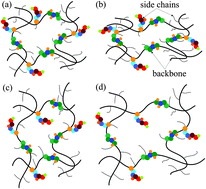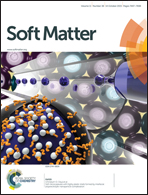Coupled nonlinear oscillation and stability evolution of viscoelastic dielectric elastomers
Abstract
This article describes the development of an analytical model to study the coupled nonlinear oscillation and stability evolution of viscoelastic dielectric elastomers (DEs) under non-equibiaxial tensile forces by utilizing the method of virtual work. Numerically calculated results are employed to predict this nonlinear dynamic behavior. The resonant frequency (where the amplitude–frequency response curve peaks) and the amplitude–frequency response of the deformation in both in-plane directions are tuned by varying the values of tensile force. The oscillation response in the two in-plane directions exhibits strong nonlinearity and coupling with each other, and is tuned by the changing tensile forces under a specific excitation frequency. By varying the values of tensile forces, the dynamic viscoelastic creep in a certain in-plane direction can be eliminated. Phase diagrams and Poincaré maps under several values of tensile forces are utilized to study the stability evolution of the DE system under non-equibiaxial tensile forces.


 Please wait while we load your content...
Please wait while we load your content...